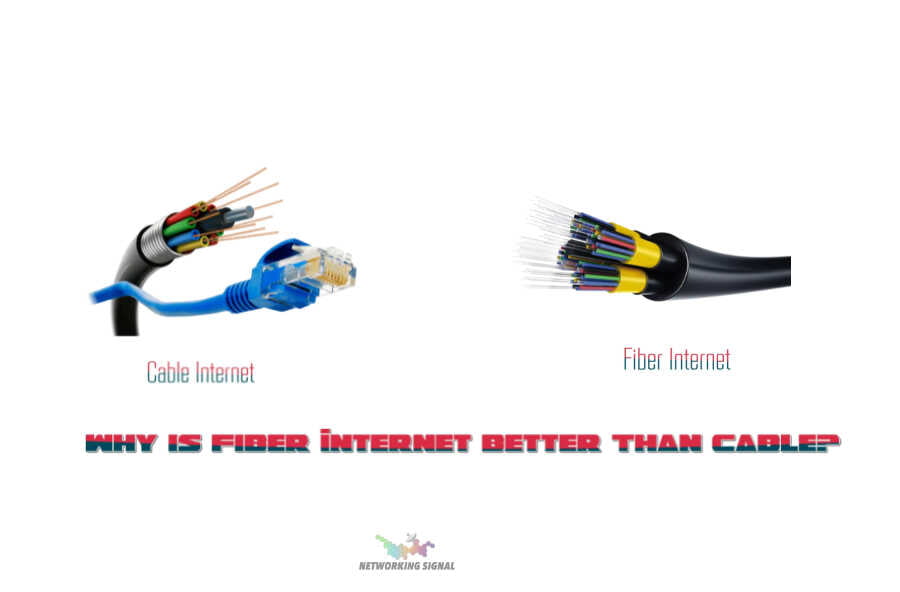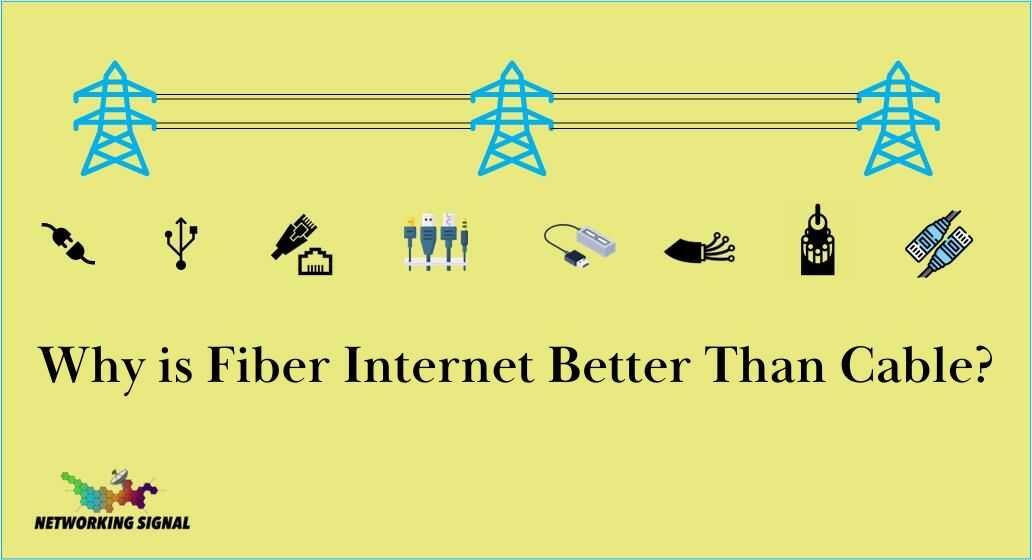In today’s digitally connected world, reliable and high-speed internet access is crucial for individuals, businesses, and communities. Regarding internet connectivity options, two prominent technologies stand out: fiber internet and cable internet.
In this article, we will explore why fiber internet surpasses cable internet in terms of performance, reliability, scalability, and overall value for money.
Why is Fiber Internet Better Than Cable?

1. Speed and Bandwidth
One of the key advantages of fiber internet over cable is its remarkable speed.
Fiber optic cables use pulses of light to transmit data, which allows for significantly faster speeds compared to the electrical signals used in cable internet. With fiber, you can enjoy blazing-fast download and upload speeds, ensuring a smooth and seamless online experience.
For instance, while cable internet can offer respectable speeds, it often falls short when it comes to symmetrical upload speeds. Fiber internet, on the other hand, provides symmetrical speeds, meaning that both downloading and uploading data occur at similar rates. This balanced speed is particularly important for activities like video conferencing, cloud computing, and uploading large files.
Look Here:
To illustrate the difference, let’s consider a real-life example.
John, a freelance graphic designer, relied on cable internet for his work. However, he frequently encountered frustrating delays when sending design files to clients.
After switching to fiber internet, he noticed a significant improvement in his workflow. Uploading large design files became a breeze, allowing him to deliver projects faster and improve client satisfaction.
2. Reliability and Consistency
Another area where fiber internet outshines cable is reliability.
Cable internet relies on coaxial cables, which are vulnerable to various forms of interference. Factors such as distance from the service provider and network congestion can significantly impact cable internet performance, resulting in slower speeds and intermittent connectivity issues.
Fiber optic technology, on the other hand, is highly resistant to interference. The use of light signals enables data transmission over long distances without degradation or interruptions. This makes fiber internet extremely reliable, providing a consistent and stable connection even during peak usage periods.
Look Here:
- What is the Best Ethernet Cable For Long Distances? (Updated 2023)
- Best Bulk Ethernet Cable (Updated 2023)
Consider the experience of a small business that switched from cable to fiber internet.
Prior to the switch, their employees often experienced frustrating connection drops and slow speeds, hampering productivity.
However, after upgrading to fiber, they noticed a remarkable improvement in their day-to-day operations.
The reliability of fiber internet allowed them to work seamlessly, collaborate effectively, and avoid costly disruptions.
3. Scalability and Future-Proofing
As technology continues to evolve, the demand for faster and more reliable internet will only increase.
This is where fiber internet has a significant advantage over cable. Fiber optic cables have a much higher bandwidth capacity, allowing for the seamless transmission of large amounts of data. This scalability makes fiber internet a future-proof choice for both residential and commercial users.
Cable internet, on the other hand, relies on copper infrastructure that has inherent limitations. As data demands grow, cable infrastructure can become strained, resulting in decreased speeds and overall performance. Upgrading cable infrastructure to meet higher bandwidth requirements can be costly and time-consuming.
A prime example of fiber internet’s scalability is its ability to support emerging technologies like virtual reality (VR), augmented reality (AR), and the Internet of Things (IoT).
These technologies rely heavily on fast and reliable internet connections, and fiber’s robust infrastructure can effortlessly meet their demands.
To highlight the benefits of scalability, let’s consider a scenario where a growing company needs to expand its operations and implement cloud-based services.
By choosing fiber internet, they were able to accommodate the increased data demands without experiencing any drop in performance. This allowed them to scale their business seamlessly and stay ahead of the competition.
Look Here:
4. Infrastructure and Installation
When it comes to infrastructure, fiber, and cable internet have distinct differences.
Cable internet utilizes coaxial cables, often shared among households or businesses in a neighborhood. This shared infrastructure can lead to network congestion and decreased speeds during peak hours.
Fiber internet, on the other hand, relies on dedicated fiber optic cables that are capable of delivering high speeds and low latency. While the initial installation of fiber infrastructure can be more involved, the long-term benefits outweigh the initial setup time and cost.
It’s worth noting that the availability of fiber internet can vary depending on the region. In some areas, fiber infrastructure may already be established and readily accessible, while in others, the rollout of fiber may still be in progress. However, as demand for high-speed internet continues to grow, fiber availability is steadily increasing.
To showcase the impact of fiber infrastructure on a community, let’s consider the case of a small town that invested in a community-wide fiber installation.
The introduction of fiber internet brought about significant positive changes, such as attracting new businesses, improving educational opportunities, and enhancing the overall quality of life for residents.
5. Cost and Value for Money
While it’s true that fiber internet may have a higher upfront cost compared to cable internet, it offers substantial long-term cost savings and value for money. Cable internet providers often advertise lower prices but may not include equipment rental fees or offer the same level of performance and reliability as fiber.
Additionally, the scalability and future-proofing advantages of fiber internet result in a reduced need for infrastructure upgrades over time. This can lead to significant cost savings for businesses and individuals alike, as they won’t have to invest in costly upgrades to keep up with growing data demands.
Furthermore, fiber internet providers often offer bundled services that combine internet, TV, and phone services, providing additional value for money. These bundled packages can simplify billing, offer competitive pricing, and provide a comprehensive solution for all communication and entertainment needs.
Let’s examine the cost analysis of fiber versus cable over five years.
While the upfront cost of fiber may be higher, the long-term savings on equipment rental fees, reduced downtime, and improved productivity can outweigh the initial investment.
This analysis reveals the true value and cost-effectiveness of fiber internet over cable.
Conclusion
In conclusion, fiber internet emerges as the clear winner when compared to cable internet. Its faster speeds, reliability, scalability, and long-term cost savings make it a superior choice for both residential and commercial users.
As technology advances and data demands increase, fiber internet provides the necessary infrastructure to support emerging technologies and ensure a seamless online experience.
By embracing fiber internet, individuals, businesses, and communities can harness the power of high-speed, reliable, and future-proof internet connectivity.

